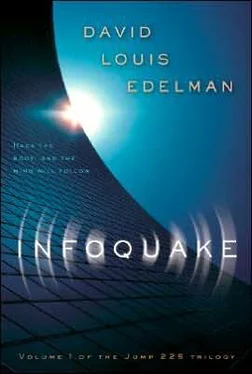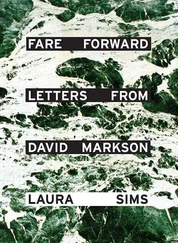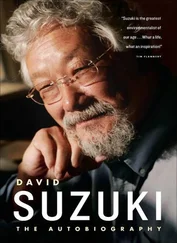ON THE SCIENCE OF BIO/LOGICS
Although Sheldon Surina has been credited with founding the discipline of bio/logics, he was not the first to try to use computational power to enhance the human body. Indeed, the science of nanotechnology had grown quite sophisticated in the years immediately preceding the Autonomous Revolt. But the Revolt put an end to such experimentation. For many years, any attempt to explore the intersection of humans and machines was deemed an attempt to resurrect the Autonomous Minds. Dozens of promising scientists ended up dead or living in forced labor camps because of their "radical" ideas.
Sheldon Surina's seminal paper Towards the Science of BiolLogics and a New Direction for Humanity changed all this.
It is difficult to explain why Surina's ideas found acceptance when so many other similar suggestions ended up in the dustbin of history. Most students of the period have concluded that Surina's bio/logics system was different from its predecessors in one crucial aspect: its humanocentric approach emphasized personal choice and responsibility.
A THREE-LEGGED SYSTEM
Surina conceived of a system with equal roles for hardware, software and information. Like a three-legged stool, removal of any of the legs would cause the system to collapse.
The hardware in question would consist of microscopic machines placed in strategic locations throughout the human body. These nanotechnological machines would contain a variety of standard tools for maintenance of human tissue, everything from routine measurement to precise surgery.
But in Surina's system, the machines themselves would be incapable of independent action. Their every movement would be controlled by programmable software that could be strictly controlled by the patient. Furthermore, Surina envisioned a competitive software industry arising to provide ever-improving versions of this controlling software.
The third indispensable leg of Surina's bio/logics system consisted of an independent storehouse of medical information. Software would then have a trusted source to consult for information that would affect the directions given to the hardware.
Surina's vision was remarkably prescient, and the bio/logics system in place today still abides by those original principles. The nanotechnological machines that Surina envisioned were pioneered by his protege Henry Osterman and his OCHRE Corporation. Dr. Plugenpatch became the world's trusted repository of medical information. And of course, a highly competitive market for bio/logic software grew and continues to fuel the world economy to this day.
Of course, not all is as Surina envisioned it. In his paper Towards the Science of BiolLogics, Surina made free choice a prerequisite of a working system. He wanted users to be able to choose from a wide variety of nanotechnological systems, software programs and information warehouses. According to Surina, free competition was crucial to encouraging innovation and preventing corruption. But Surina lived to see both the OCHRE Corporation and Dr. Plugenpatch achieve virtual monopolies in their respective fields, leaving only the software industry as a truly competitive field.
In addition, the strict separation of functions that Surina wanted has not always been maintained. The distinctions between the three legs of the system have begun to blur as the OCHRE Corporation's successors have imbued their bots with limited intelligence, and software programmers have embedded their own medical standards rather than rely on outside storehouses of information.
BIO/LOGIC PROGRAMMING
While the techniques of creating bio/logic programs have changed radically over the years, the principles remain the same.
Bio/logic software is a series of instructions a user can transmit to his or her OCHRE machines to perform a specific function. In Surina's day, programming was performed through the manipulation of a series of machine "languages," software was stored on miniature "chips" implanted within the body, and instructions were broadcast to the machines inside the body through radio waves.
Programming itself has evolved from a primitive linguistic model to today's more sophisticated visual model. This evolution enabled programmers to visualize logical structures instead of spelling them out. Advances in the science of holography allowed the invention of MindSpace, which allowed programmers to interact with their programs through a three-dimensional interface. The capabilities of MindSpace programming have been significantly expanded by the development of special tools for the medium, the bio/logic programming bars. A typical set of programming bars consists of twenty-six entities (marked A to Z after the Roman alphabet), with each bar containing three to six separate functions. Most MindSpace bubbles also recognize a common set of twelve hand gestures.
The data itself, once stored on plastic chips, is now stored in protected molecular chains scattered throughout the civilized world. Prengal Surina's Universal Law of Physics and Aloretus Monk's discovery of subaether transmission have made it practical for programmers to store information on an atomic level virtually anywhere in the world.
THE FUTURE OF BIO/LOGICS
Libertarian elements of the government have been particularly active in promoting a renewal of competition in the hardware and information legs of Sheldon Surina's three-legged system. Proposals include privatizing Dr. Plugenpatch and breaking up the three main companies that have divided up the OCHRE spectrum between themselves. But detractors have pointed to the chaos of the bio/logic programming industry as reason to keep these industries heavily regulated and centralized.
The bulk of current bio/logic research is dedicated to improving the energy capacity of the human body. Users often encounter problems when bodily resources that run bio/logic programs are overtaxed, and some industry watchers predict severe resource limitations in the human body within the next twenty to thirty years.
APPENDIX D
ON THE SURINAS
The line of scientists, politicians, freethinkers, and programmers that began with Sheldon Surina is perhaps the greatest dynasty humankind has known since the Caesars. Not only did the Surinas lead the way out of the chaos of the Big Divide and give the world trust in technology again; they also enriched that world in ways no family had done before or has done since.
SHELDON SURINA (-41 TO 116)
Like most of his peers, Sheldon Surina was taught to shun the achievements of the scientists and programmers that led to the Autonomous Revolt. During Surina's formative years, the world was still feeling the aftershocks of that cataclysmic event and the disasters that followed it (although by this time, the world had regained a modicum of order, and New Alamo's fanaticism was already beginning to taper off). His parents sent him to the Gandhi University at Andra Pradesh for a spiritual education. It was during his long apprenticeship at the Gandhi University that Surina became enamored with the ancient wonders of biotechnology. Against the warnings of his proctors (who considered the sciences to be a heretical course of study), Sheldon embarked on a project to recreate the achievements of the biologists of antiquity.
When he was 41 years old, Sheldon published his seminal work, Towards the Science of BiolLogics and a New Direction for Humanity. The first words of this manifesto were a shocking call to arms: "There is no problem that we cannot solve through scientific innovation." He then proceeded to outline a new discipline of science that would allow computer programs to interact with the systems of the human body. Surina called his new discipline "bio/logics."
Читать дальше






![David Jagusson - Fesselspiele mit Meister David [Hardcore BDSM]](/books/486693/david-jagusson-fesselspiele-mit-meister-david-har-thumb.webp)





